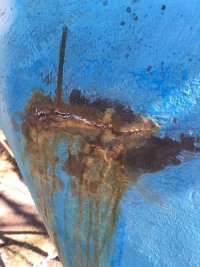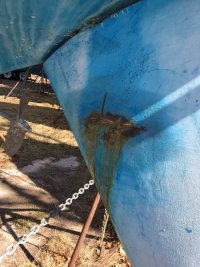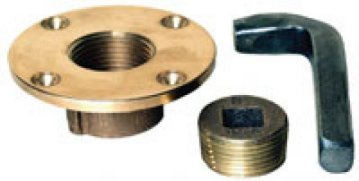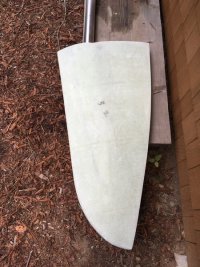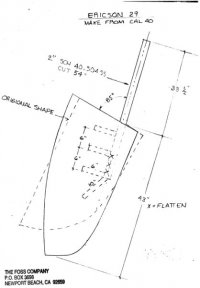cworley
Junior Member
Hello - Not sure how to approach this issue, see picture. The port side rudder obviously is leaking out of the rudder. There is prior evidence of patching, but does not appear to have been any significant cut outs made to explore the "real" problem. I am suspecting that there is rust on the rudder substructure (frame) somewhere that has pushed through an existing crack due to damage. I remember reading that the rudder frame is stainless steel, but not totally sure on that. Does anyone know it is made of or have a picture of the rudder frame superstructure? My thought is to grind away the damaged area and see what I find. Don't think I need to drop the rudder. Could there be water getting into the rudder from the top somewhere that is the actual root to this entire problem? The previous owner was not aware of any damage, and this has appeared within the last year. Any thoughts, suggestions greatly appreciated! Thanks - Chuck
